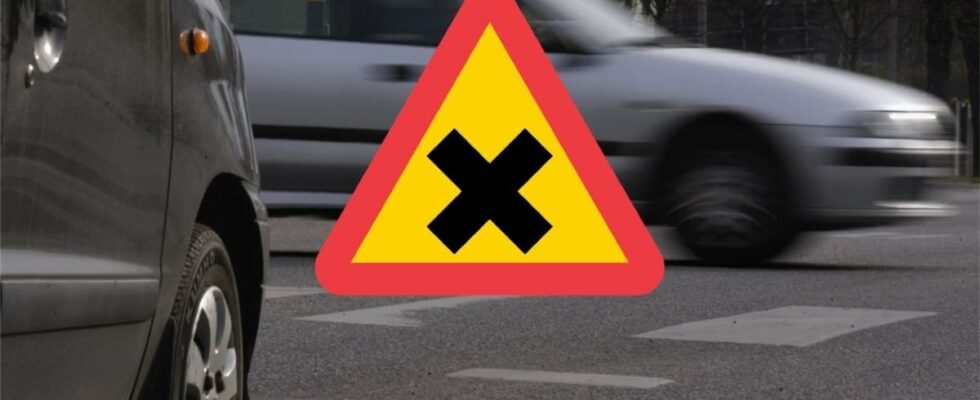The right-hand rule is a concept that almost all drivers are familiar with. At the same time, many are a little unsure of what it actually means.
Depending on where you are in our long country, drivers also tend to be differently good at applying the right-hand rule – whether they know the rule or not.
Below you will find out what applies.
Read more: The car owners disapprove of the government’s environmental investment
What is the right rule?
The right-hand rule means that if two vehicles meet so that their courses intersect, a driver is obliged to yield to vehicles approaching from the right.
Obligation to yield means that you either reduce your speed in good time or stop, and that you may only drive on if this can be done without danger or obstruction.
The right-hand rule also applies to bicycles – Photo: Jeppe Gustafsson/TT
The definition of vehicle is as follows The Swedish Transport Agency a “device on wheels, tracks, tracks or the like which is set up mainly for travel on the ground and does not run on rails”.
This means that the right-hand rule does not only apply to cars, trucks and motorcycles, but also to bicycles, track carts and horse-drawn trailers.
Read more: Best electric car right now – according to Norwegian experts
As for the right hand rule?
According to the Swedish Transport Agency’s website, the simple answer to where the right-hand rule applies is “everywhere”.
It applies in part at three- and four-way intersections, but also in parking lots and other open spaces, as well as out in the terrain. However, the right-of-way rule does not exempt drivers from the requirement to exercise special caution.
The sign “Warning for crossing” – Photo: Transportstyrelsen
In the majority of places where the right-hand rule applies, there are no signs to signal this. However, the sign “Warning for road crossing” is a good clue that you are approaching a crossing of a more dangerous type where the right-hand rule applies.
Read more: Electric car with a guarantee of happiness in love – repurchase in case of divorce
As for the right rule not?
Although the right-of-way rule applies everywhere, there are situations where signs, traffic signals or other circumstances determine who should give way.
The right-hand rule does not apply, for example, when driving on a main road or when entering a main road, or when leaving an acceleration lane or if an acceleration lane connects to your lane.
It also does not apply in roundabouts, where working traffic lights are used, or where signs for the obligation to stop or the obligation to turn are posted.
Last but not least, the right rule does not apply where the exit rule applies.
Read more: For sale: Completely unknown Saab – costs SEK 800,000
